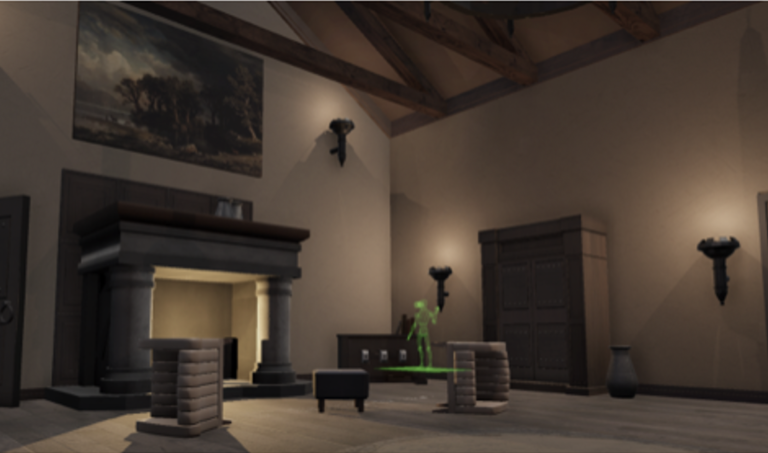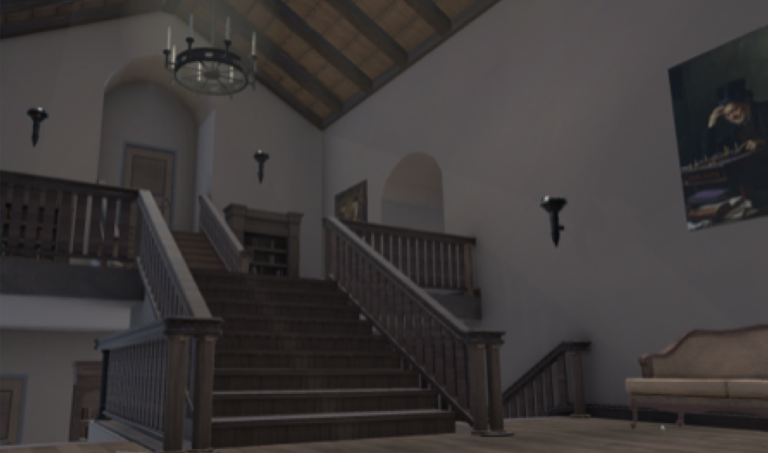


Creating Escape Room Scenarios
Josh Pallag
November 17, 2018
Throughout this process, our main goal has been to design a series of puzzles of equal difficulty in a virtual reality space that can be used to test problem solving and insight. With the desired test length of roughly 25 minutes, we aimed to have approximately 3 puzzles per environment.
In order to design these puzzle sequences, I researched a multitude of different puzzle types from more physical based to pattern recognition. As an escape room veteran myself, I’d seen firsthand a variety of different problem solving paradigms that could be used as the source of puzzles like cyphers, object placement, and more. Even so, one of the major challenges with this project was to make puzzles varied enough while still being the same difficulty. However, by tying the environments together with similar architecture, decor, and props like books, vases, and chairs, I was able to maintain quite similar test settings with the only main variable being these puzzles.
From there, I designed each series around the same objective: find the blue key. Each series would also have clues, and while I took a different approach for each puzzle itself like the map comparison puzzle in room 1 or the object orientation puzzle in room 2, we made sure to test it and reference the time and relative difficulty of each in relation to the others to make sure nothing was too difficult or too easy.
Thus far, our preliminary tests with rooms 1-3 have suggested that the difficulties of these puzzles could be similar with an average of 25 minutes each, but with norming testing we will be able to more fully tune and adjust the rooms for equal difficulty.

